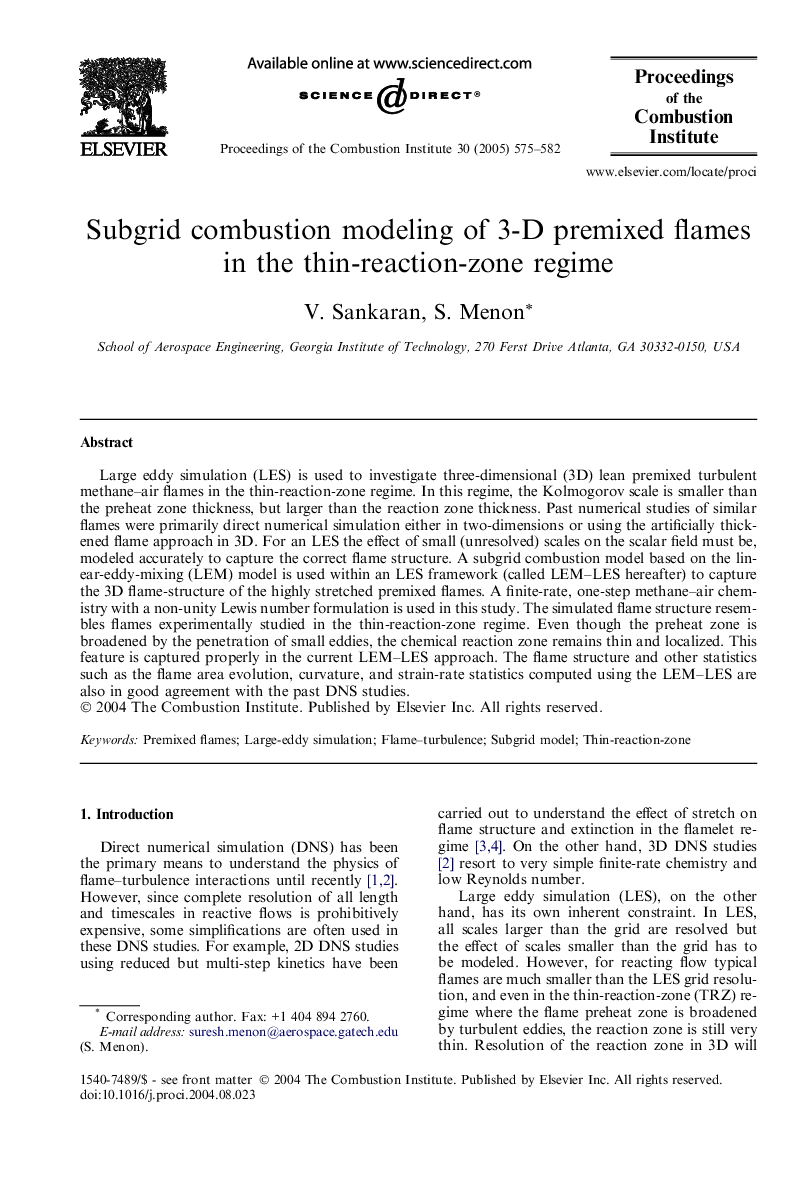| Article ID | Journal | Published Year | Pages | File Type |
|---|---|---|---|---|
| 9637379 | Proceedings of the Combustion Institute | 2005 | 8 Pages |
Abstract
Large eddy simulation (LES) is used to investigate three-dimensional (3D) lean premixed turbulent methane-air flames in the thin-reaction-zone regime. In this regime, the Kolmogorov scale is smaller than the preheat zone thickness, but larger than the reaction zone thickness. Past numerical studies of similar flames were primarily direct numerical simulation either in two-dimensions or using the artificially thickened flame approach in 3D. For an LES the effect of small (unresolved) scales on the scalar field must be, modeled accurately to capture the correct flame structure. A subgrid combustion model based on the linear-eddy-mixing (LEM) model is used within an LES framework (called LEM-LES hereafter) to capture the 3D flame-structure of the highly stretched premixed flames. A finite-rate, one-step methane-air chemistry with a non-unity Lewis number formulation is used in this study. The simulated flame structure resembles flames experimentally studied in the thin-reaction-zone regime. Even though the preheat zone is broadened by the penetration of small eddies, the chemical reaction zone remains thin and localized. This feature is captured properly in the current LEM-LES approach. The flame structure and other statistics such as the flame area evolution, curvature, and strain-rate statistics computed using the LEM-LES are also in good agreement with the past DNS studies.
Related Topics
Physical Sciences and Engineering
Chemical Engineering
Chemical Engineering (General)
Authors
V. Sankaran, S. Menon,
